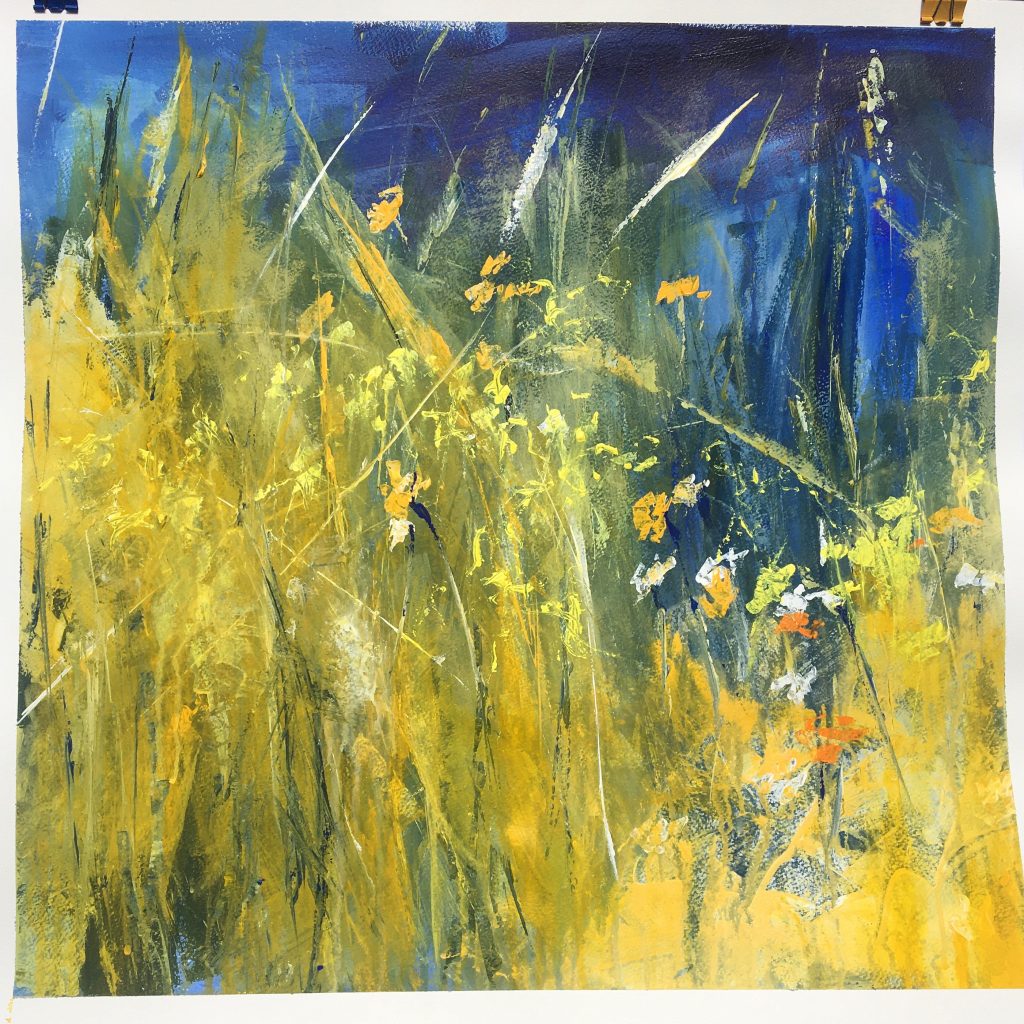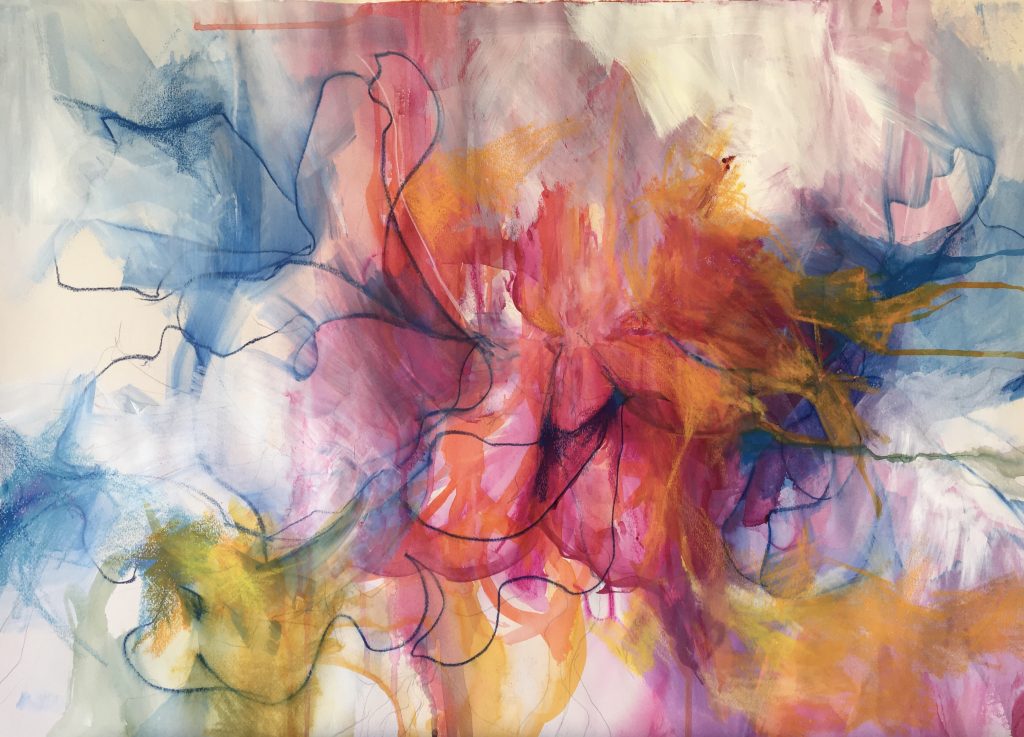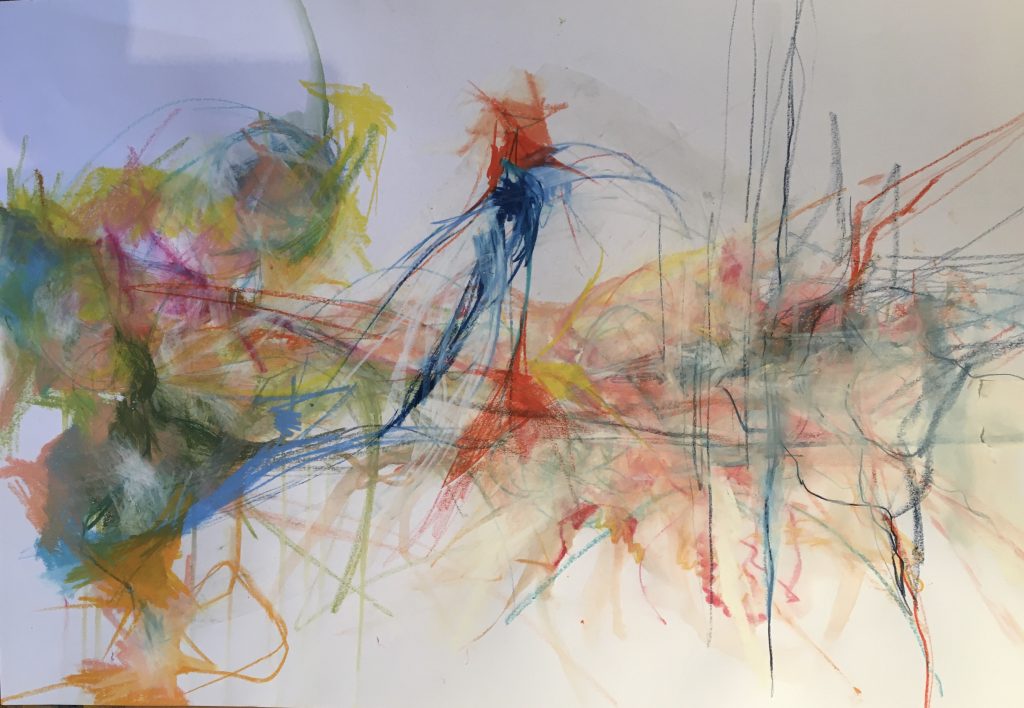ABSTRACTION AND SOUND
Continuing my investigation into conveying sound through image making, I ran some of my work by a group of fellow painters and their responses were enlightening. The following is what I gained from the discussion.
- They didn’t know my work so an explanation was necessary, raising the question of the need for the artist’s statement.
- The vibrancy of the images made it difficult for the viewer to move beyond the visual.
- Because the images contained elements of the representational in the form of flowers, this tended to focus the viewer on looking rather than listening.
- The absence of ‘sound’ to accompany the image also made it difficult to ‘listen’ to the paintings.
I’m very grateful to this group for the genuine critical review I got.
I have taken three of the paintings with varying degrees of representation to consider these questions…



Looking at these images for some time has made me question the need for the viewer to understand what is in the artist’s thought as he paints. Surely the viewer will bring his/her own life and experience to the image, just as the artist is doing. Because my stimulus for painting is in the realm of sound, it isn’t necessary for the viewer to echo this. For me, it doesn’t matter whether the images contain elements of representation of the natural world or not, I still ‘hear ‘ them. And I find I can ‘hear’ paintings that I’m looking at, even though the artist is not focused on the sonic landscape.
So the conclusion I’m coming to at this present moment is that we need to understand the natural world through all of our senses because ultimately each of us views our environment according to who we are. This opens up new possibilities for the work…
Christopher Neve in ‘Unquiet landscape’ finishes his book with this summing up, “The landscape is meaningless…and unresponsive. Nothing we can do will rouse it from its absolute inertia…Love it lifelong, and not a blade of grass will change direction because of our feelings…If it seems to have great beauty, that is because of what we are, not because of what it is…The landscape remains; and the pictures remain….to look in an artist’s place for his inspiration is all but pointless because his source is in his own mind….Any account of how they (the pictures) were seen like that, and of how they were re-imagined, is not so much about the places as about us. The birds have stopped singing in the lost lands. The unquiet country is you.”
I feel that each of these images are valid pieces even if the association with the sonic landscape is less evident than the visual. The important point for me as an artist is to find the means to express my personal response to the world and to life generally through the paintings, be it through the sounds of the earth, the visual impact of a flowering explosion in the garden or even through memory of other places and colours.
